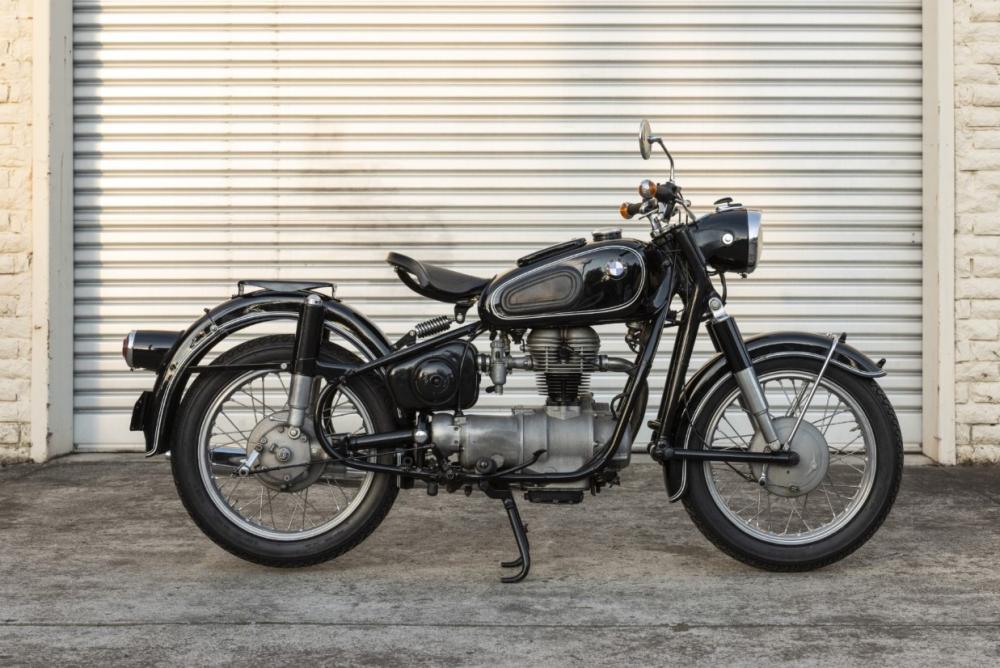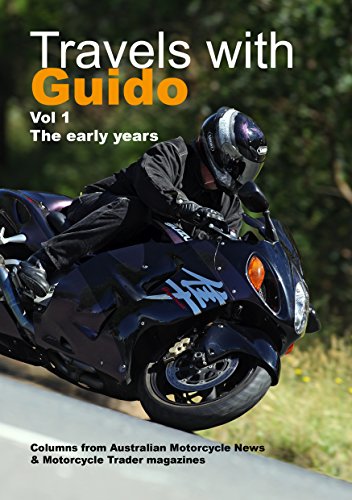Motorcycle Investor mag
Subscribe to our free email news
BMW R27
(by Ian Falloon, June 2022)

(Note: This R27, among other classics, is coming up
for auction
with Donington Australia on 3 July 2022.)
Boxer
legend
BMW’s first single was
the R39. Released in 1925, the R39 was the first of a
range of single cylinder
models that lasted through until 1966. These were always
quite advanced in
specification but only provided adequate performance.
While BMW’s singles have
never garnered the following of the twins, in Germany
the singles often outsold
the more expensive boxers, especially during the 1930s
and 1950s. In the two
decades, from 1948 through until 1969, 62 per cent of
BMW motorcycles produced
were singles. The R27 was the last of this long
lineage.
The R39 established
the basic blueprint for BMW singles that would last
the next forty years. While
it was intended as a budget model, the specification
was surprisingly high.
Like the boxer twins the 250cc engine was mounted
longitudinally in the frame,
but with a vertical cylinder, and shaft drive.
The gearbox bolted
directly to the crankcase, driven through a single
plate dry clutch mounted to
the flywheel. A wide range of singles was offered
throughout the 1930s,
culminating in the R23 in 1938.
When BMW recommenced
motorcycle production after World War II, Allied
requirements restricted the
displacement to 250cc. As all the drawings for all BMW
products were
requisitioned by the Americans so a pre-war R23 was
stripped down and minutely
measured.
Released in 1948, the
R24 was extremely popular and production continued
through until 1950 when the
R25 replaced it. The R25 received a welded tubular
steel frame that was
suitable for sidecar attachment, and plunger rear
suspension. Evolutionary
versions saw the R25/2 in 1951 and the R25/3 in 1953.
During the early
1950s, the R25 singles proved popular in Germany. This
was a period where cheap
transportation was in demand, and while the BMW 250s
only provided barely
adequate performance, they were quality machines,
built to last. However,
circumstances had changed by 1955. The domestic market
had reached saturation
and a more modern motorcycle was required for export.
Following on from the
R50 and R69 of 1955, the 250cc single also received an
Earles-fork and a rear
swingarm for 1956. The tail shaft was also improved
over previous plunger frame
designs. The new model was the R26, and while
motorcycle sales were generally
extremely depressed during the latter half of the
1950s, the R26 proved
surprisingly popular, particularly for export markets
in Third-World countries.
More than half the
motorcycle production between 1956 and 1960 comprised
the R26. The R26 chassis
was very similar in layout to the R50, providing
improved handling and comfort
over the old plunger frame R25/3. The weight was also
increased slightly, so
the engine was uprated.
During BMW’s 1960
restructuring the R26 evolved into the R27. Although
essentially similar, the
247cc (68x68mm) overhead valve engine now produced
18hp, at a considerably
higher 7400rpm. The Bing carburettor was a Type
1/26/68. The compression ratio
was increased to 8.2:1, and there was a new camshaft.
The contact breaker was
positioned on the front of the camshaft, and there was
a spring-loaded
tensioner for the timing chain.
The most significant
development though was the engine was now rubber
mounted to quell the increased
vibration. The engine and gearbox were supported by
rubber mounts in four
locations in the duplex frame, along with a rubber
cylinder head bracket and
two fore and aft rubbers on the front and rear to
limit longitudinal movement.
In all other respects
though the chassis was identical to the R26 and the
R27 weighed a rather solid
162kg. The R27 was intended to be the biggest seller
in the revamped motorcycle
range of the early 1960s, but it was too expensive and
still only offered
barely adequate performance. Production of BMW singles
numbered more than
230,000, with more than 15,000 R27s, over their
forty-one year lifespan, and
they successfully provided reliable and inexpensive
transportation.



-------------------------------------------------
Produced by AllMoto abn 61 400 694 722
Privacy: we do not collect cookies or any other data.

Archives
Contact





